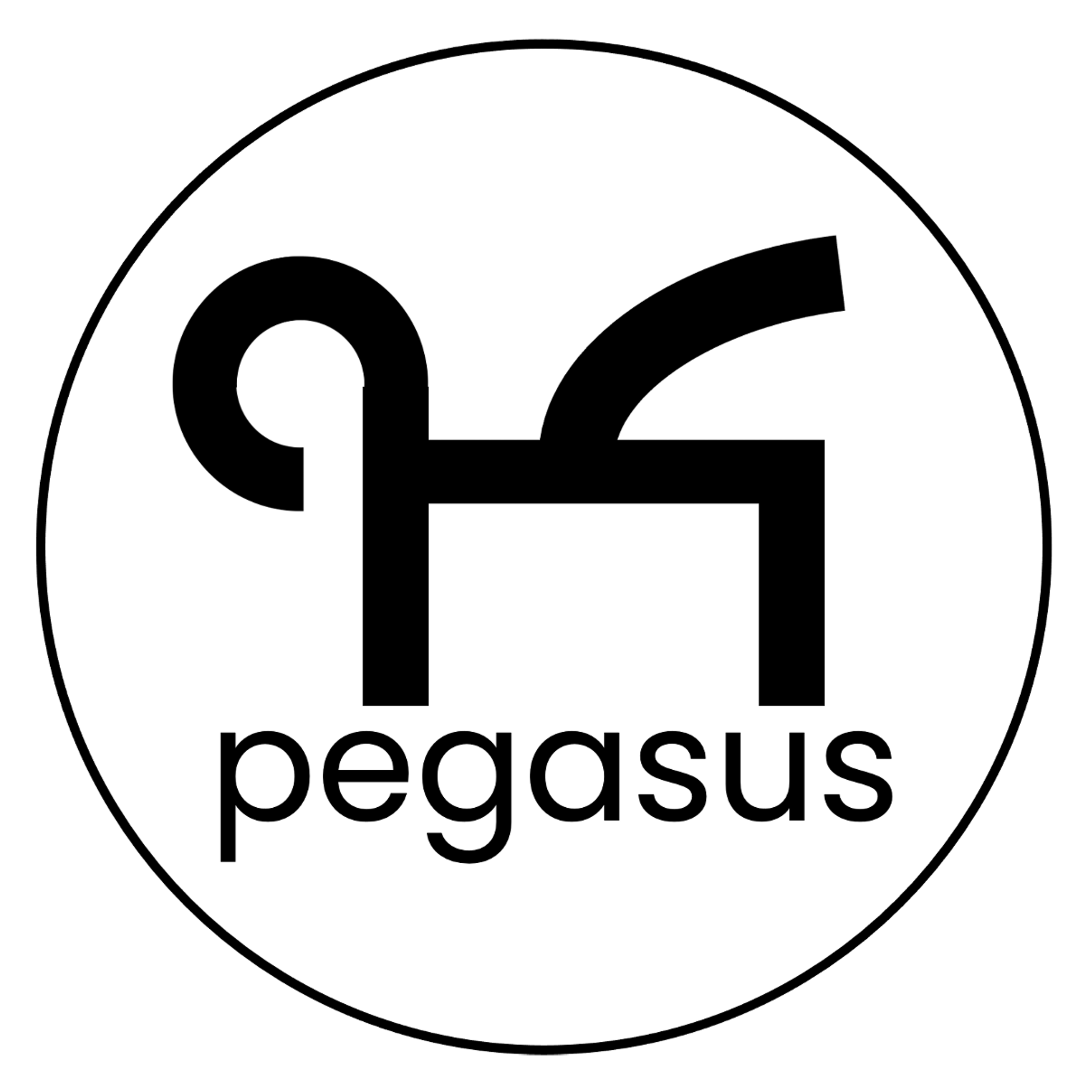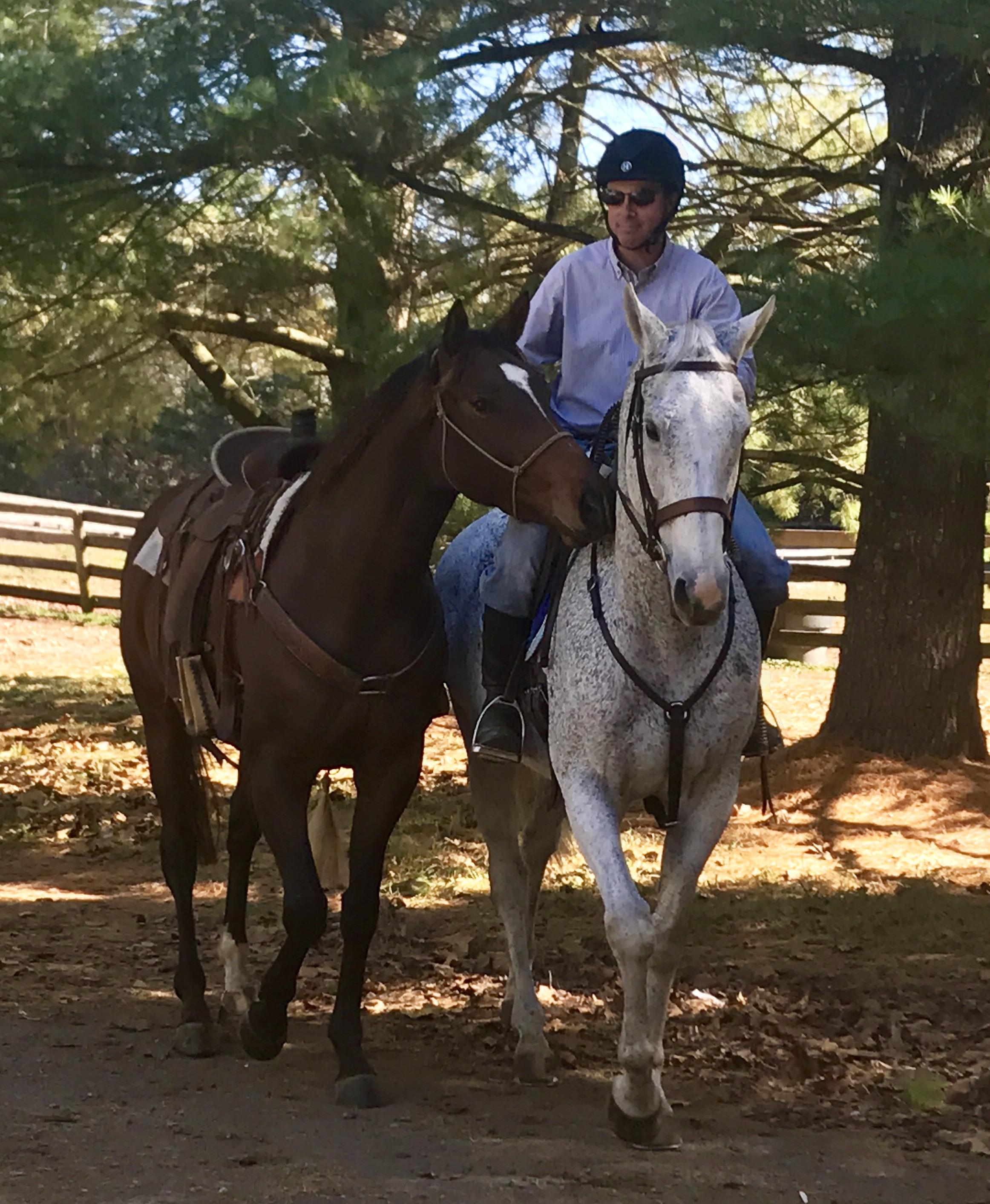By Clare Mansmann for Pegasus
Retraining your OTTB for a second career after racing can be a rewarding process (plus a lot of hard work). Clare Mansmann details exactly what your OTTB might already know (spoiler: a lot!), and what holes in his experience you should expect. Missed out on Part I? Click here for “So You Want to Get An OTTB, Part I: Swipe Right or Left.”

Buff Dude, standing tied at the trailer. All photos by Clare Mansmann.
You’ve swiped. You’re ready. You’ve texted, messaged, had a phone chat or two (hopefully more). Maybe you even met for coffee or lunch. You seem to be on the same page and the attraction is ripe for building upon. The first date is set and it is tremendously exciting.
But then, you realize that you may not know enough about your date. You want more background, to find their past experiences, their likes and dislikes. You feel over your head.
You begin searching social media and the inter-webs. You know you do.
To use some technical racetrack terminology, whoa back, jock. Whoa back. There’s a better plan.
Background Checks/Question the Ex: What Does Your OTTB Know?
Your new OTTB is not some unknown specimen. Just ask your trainer! (Because you have your qualified trainer, right?) Most racehorses have fairly similar histories, enough that we can build upon what we know they know. So, what are some things that they know?
Forward. They know how to go forward, and we will be using this knowledge to our advantage for a good while to come.
They’re more than just broke to ride! That’s a huge plus. They can walk and trot, canter and gallop on both leads (not just one, contrary to belief). They already know how to do flying lead changes. They have to do that daily on the track. Some of these horses come highly educated already. My boss on the track loved having event riders work for him. We would go out and do flatwork and even pop the horses through gymnastics, and this trainer is not an isolated case. Many trainers see the value in cross-training and you will see those horses advance through this transitional period very quickly and easily.
Of course, an off-track horse will typically pony very well.
They load in gates and stand. Does your show horse do that?
They have trailered and traveled, and some have even been on airplanes. They tie (though typically in the stall), they lead, they are groomed better than pretty much any of us will ever groom our horses. They’ve had farrier work and dental work (though historically, you are going to need to update these to a different set of standards) and veterinary work. They’ve seen larger crowds than they’ll see at your local show, jumbo-trons, umbrellas, strollers, golf carts, tractors, mud, dirt, and turf. They’ve been bathed, bandaged, and booted. They’ve been ridden by tens of, if not a hundred, different people. These are cultured creatures!
When an off-track horse first comes to us, we produce a plan for the horse’s transitional training based on these factors. The racehorse was taught to race. It’s our job to teach them what is expected next.
Outfit Prep and Manis/Pedis: Dentist and Farrier
Right away, get a great dentist out, because the typical OTTB needs more thorough floating than is done on the track. Don’t wait on this. Then, make a plan with your excellent farrier. If the horse has racing plates on, it is nice to remove those for at least a month, if they can tolerate it, because they tend to stress the tendons and a break is a good plan. If the horse cannot tolerate being barefoot at first, don’t worry about it. Just begin the rebalancing process. Also, dress for success and make sure you have a well-fitting saddle for your horse and your self.
Just Drinks: Basic Ground Work
We begin the ground training straight away, even if they need layup. First we tie them in a stall, because we know they are comfortable with that, then we will cross-tie them, and we will progress to tying to the fence in the arena while horses work around them, to trees, to the side of the trailer. They can have a hay net full of alfalfa if they’re nervous and that’s a great chance to get an easy snack pack in if you’re trying to up their weight. We load them on the trailer and go on low pressure field trips where they hop off and do a whole lot of nothing, so that they don’t think every trailer ride means a race.
Eve, patiently waiting for her turn
Be Sure to Wait Three Days Before Calling: More Ground Work
When they’re ready to begin under saddle work, we first work them on the ground with our rope halters, teaching them to move away from pressure from both directions. They learn the footwork, how to back up easily, how to move their front around their back and their back around their front. You’ll need help from your qualified trainer if you’re not familiar with this type of work. When they’re driving from the ground easily both directions and leading well, we will start taking them out with the pony horse. The trick here is that we pony them from their off-side, which is not done at the track. That is how we marry the new with the old. We pony them everywhere: in the ring, down the road, over creeks, ditches, small jumps, through gates — we’ve even taken some out walking with hounds and to schooling shows.
The Dinner Date: First Post-Track Ride
When this is all looking safe and steady, we put the rider on. This could happen on day one, or day thirty, depending on the horse and the weather. Extra ponying never hurts and they learn as much, albeit differently, from standing with the pony while we teach a lesson as they do working through a jump grid.
Once the rider is up, we head around the ring to walk, trot, and canter both directions, and perhaps pop over a few jumps, with a nice big loop in the reins and a strong upper body from the rider. You will find that the ground work translates very well to how your OTTB goes, stops, steers, and even picks up both leads. Where there are inconsistencies, there are ways to help the mind and body with continued ground work, and it’s a great idea to continue the work even when you are working under saddle.
Now, some people skip these steps and do just fine. Some horses have a more comprehensive foundation than others. The reason we work through these steps is because we want to find any holes in that foundation and make sure we fill them right away, because if we don’t, they will turn up in some way in the future. We want to set these horses up for the greatest success in a long-term relationship.
Clare Mansmann started riding racehorses in her teens to get fit and ready for an upper level eventing career. It worked, and in the process, she fell completely in love with the breed and the sport. Together she and her husband, Tom, run Pacific Farms, Inc., where they focus their training and lessons on the fundamentals of classical riding in all disciplines, and are passionate about providing the best, most comprehensive education to the transitioning off-track Thoroughbred in order to best serve them and their futures.
Be sure to follow and register for Clare’s upcoming events on Pegasus at the link here.
















